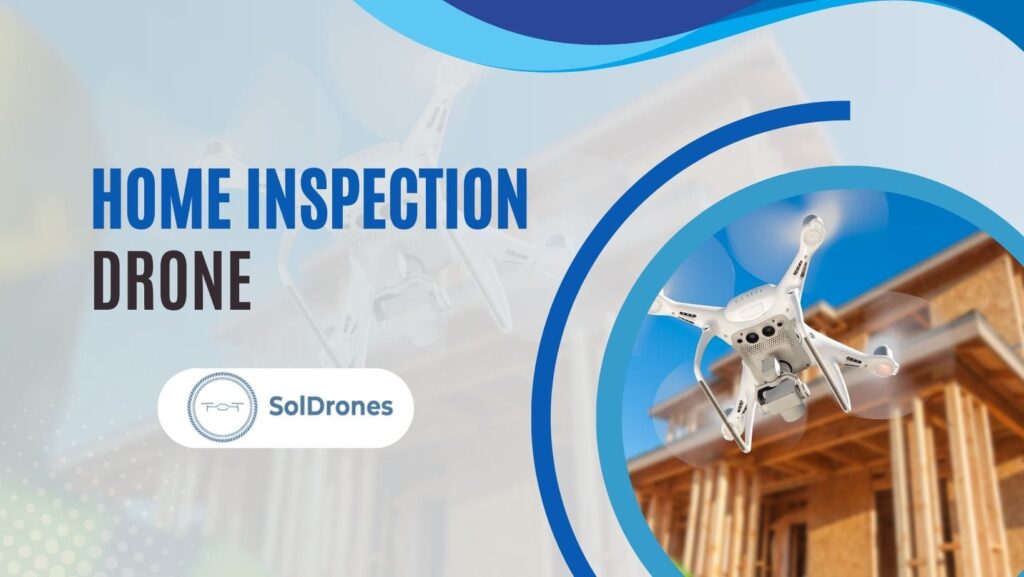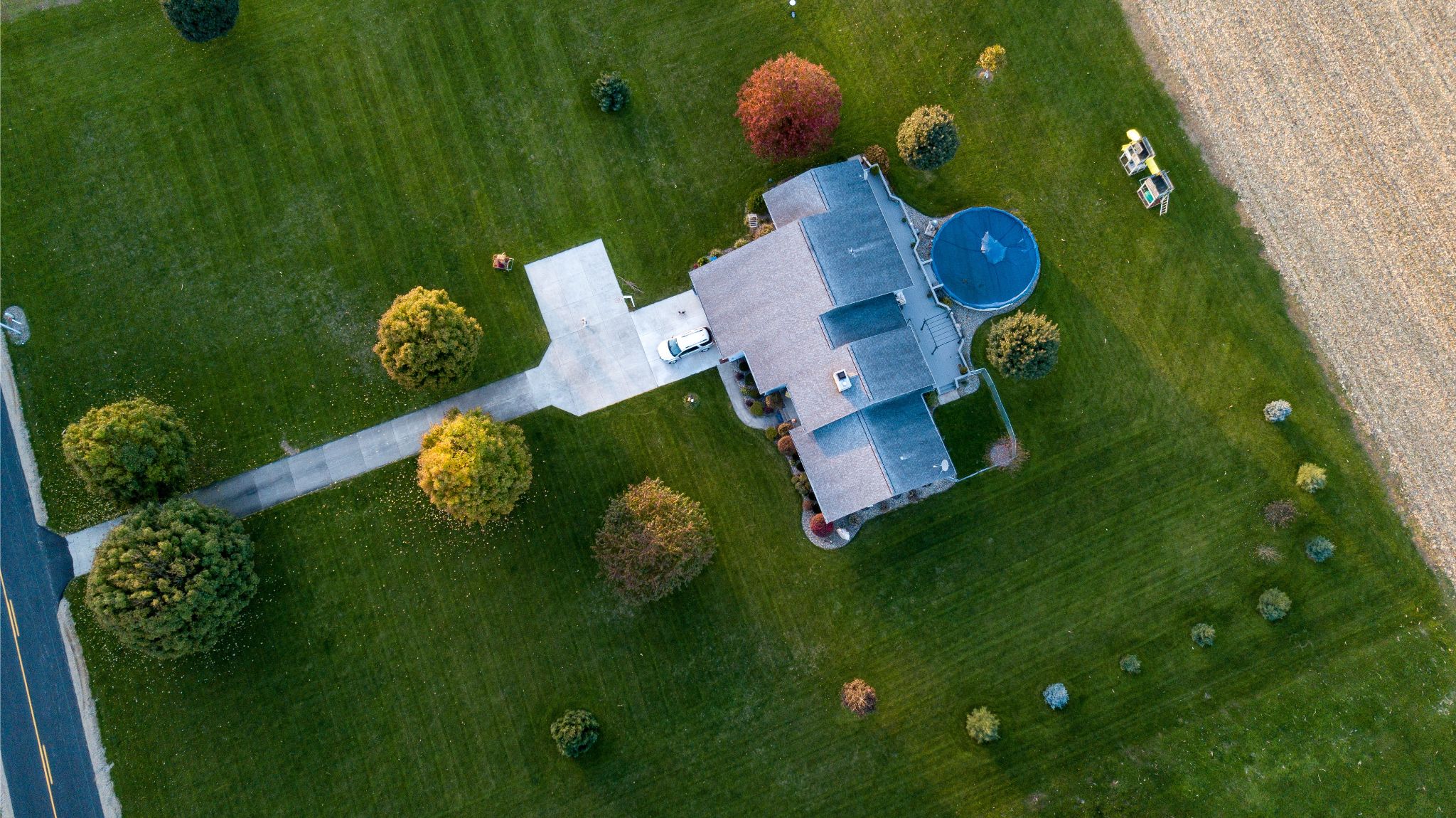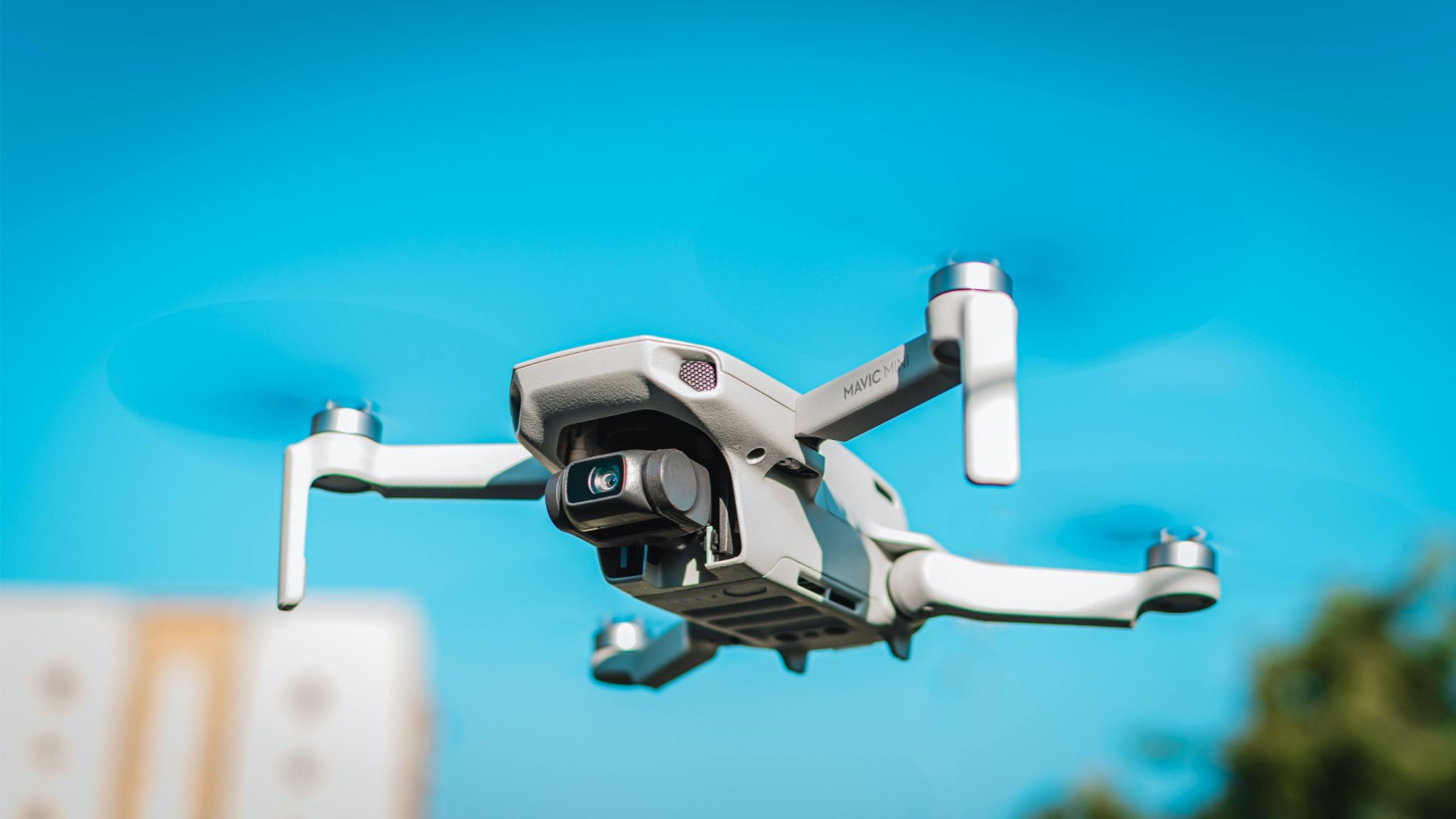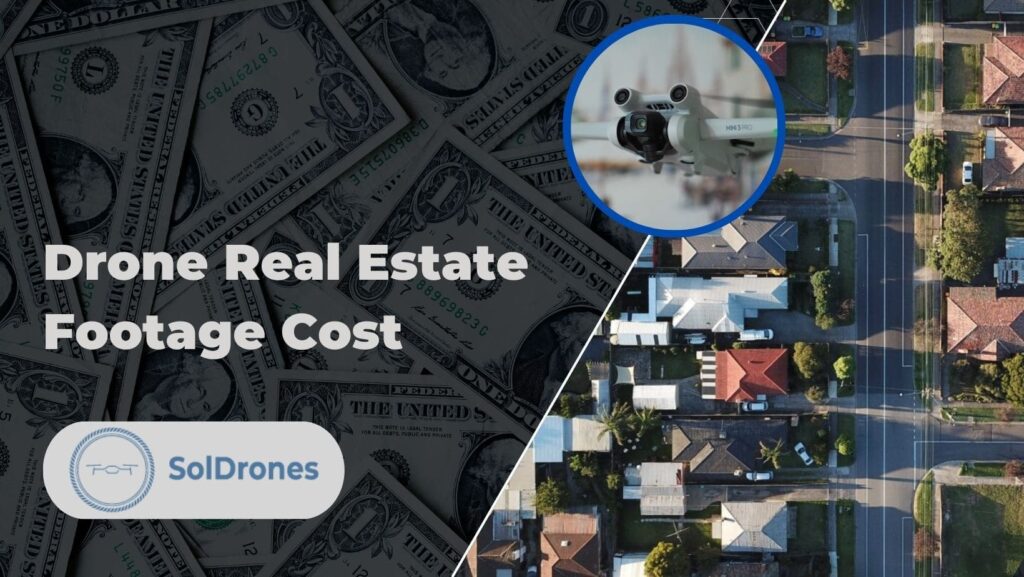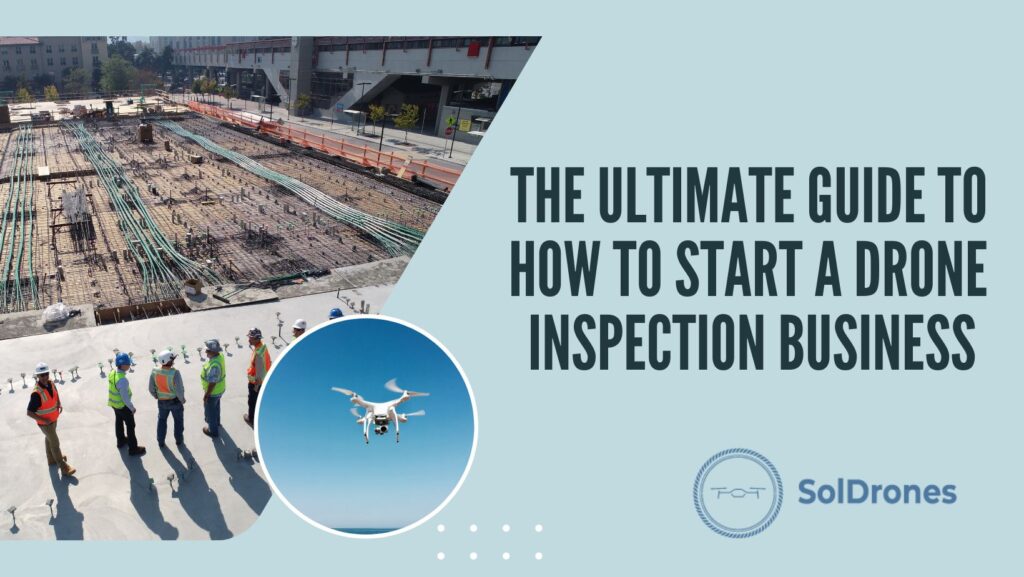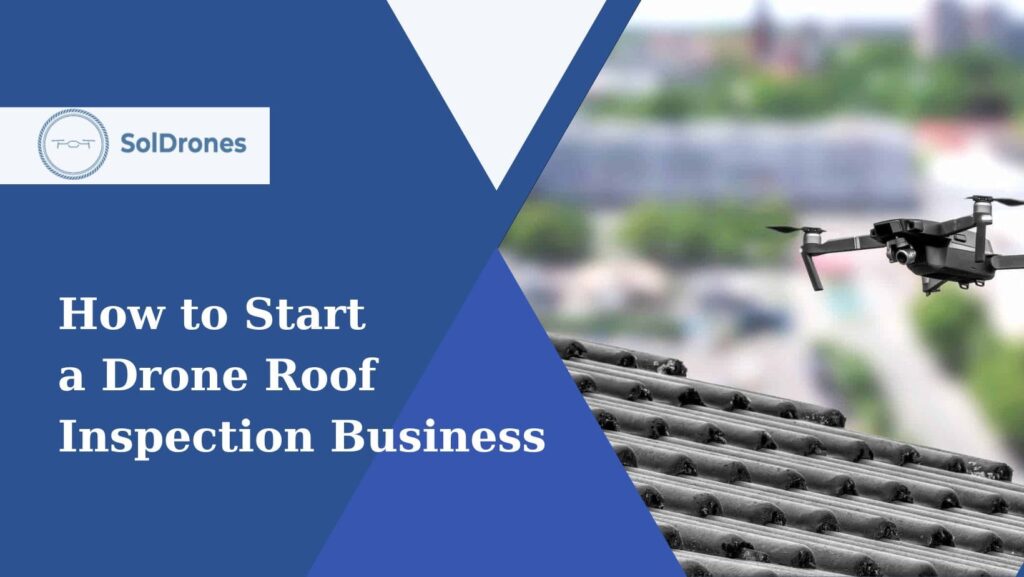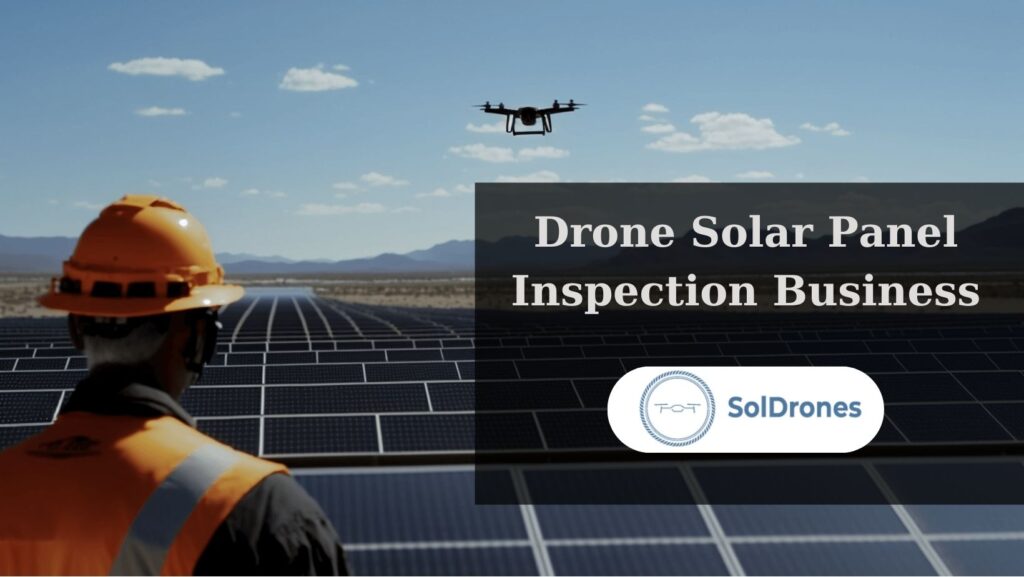Drones are transforming the traditional methods of home inspections.
They offer unparalleled views of hard-to-reach areas, ensuring no nook or cranny remains unchecked.
The assurance of safety, especially in those areas, is another commendable advantage, eliminating the risks associated with manual, ladder-based inspections.
Moreover, the efficiency they bring translates to substantial time and cost savings.
For stakeholders ranging from homeowners to inspectors, and even real estate professionals, the advantages of drone-enabled assessments, particularly in drone roof inspection, are undeniable.
It’s clear to our team at SolDrones that the future of home inspections is not just about a simple visual inspection. It’s about a comprehensive, propeller-driven survey, ensuring accuracy and thoroughness.
And that’s exactly why we’ve spent hours developing this comprehensive guide for you to better understand how to use a drone to inspect your roof.
Article Highlights
- Drones improve home inspection safety, efficiency, and aerial footage, especially for roofs.
- High-resolution cameras, flight stability, and modern GPS are crucial when choosing a drone based on property size, image detail needs, and price.
- As the industry anticipates drones with AI and increased sensory equipment, FAA regulations and technologies like the B4UFLY app are essential for legal and safe drone operations.
What Are Home Inspection Drones?
The term “home inspection drone” might sound futuristic, but its concept is rooted in practicality. Essentially, these are drones equipped with high-resolution cameras and sensors, designed specifically to inspect the structural integrity of homes, particularly areas that are hard to reach or hazardous for humans.
Their purpose?
To transform the way we look at home inspections.
drone home roof inspections are…about comprehensive, propeller-driven survey, ensuring accuracy and thoroughness.
Gone are the days of home inspectors scaling tall ladders, risking their safety to assess a roof’s condition.
With drone technology, inspections become faster, safer, and more comprehensive. These flying marvels can capture minute details, from cracked tiles to water damage, that might escape the human eye. In doing so, drones are not just changing the tools of the trade – they’re elevating the standards of a thorough inspection.
Advantages of Using Drones for Home and Roof Inspections
In recent years, drone technology has significantly reshaped the landscape of home and roof inspections. The capabilities of these aerial machines have unveiled a slew of advantages over traditional methods, raising the question: What kind of home inspection is done by drone, and what are the advantages?
- Enhanced Safety: Drones have introduced a paradigm shift in how inspectors approach the physical challenges of their job. Inspectors no longer need to navigate precarious roof edges or climb shaky ladders, ensuring their safety remains paramount.
- Time and Cost Savings: Traditional inspections can be time-consuming and often require multiple personnel. Drones streamline this process, completing inspections in a fraction of the time, and cutting labor costs.
- Access to Difficult Areas: Some parts of a home, especially roof nooks or steep angles, can be challenging to inspect up-close. With their agility and precision, drones can effortlessly hover over and capture these tricky spots.
- Improved Report Quality: The high-resolution drone cameras capture detailed aerial imagery, providing a holistic view of the property. When included in inspection reports, this imagery offers homeowners a clearer understanding of their property’s condition, making decision-making more straightforward.
Integrating drones in the inspection process is not just about technological advancement; it’s about redefining safety, efficiency, and the quality of reporting.
For inspectors and homeowners alike, these benefits underscore a shift towards smarter, more informed property assessments.
How Drones Are Transforming Roof Inspections
Video Credit: International Association of Certified Home Inspectors (InterNACHI)
Drones, especially the roof inspection drone, are quickly becoming a frontrunner in the evolution of roof inspections. What once required physical presence, risk, and sometimes guesswork, is now being transformed into a precise, safe, and efficient process.
Here’s how drones take roof inspections to new heights:
- Detailed Imagery Capabilities: Today’s drones come equipped with high-definition cameras, capturing the minutest details. This high-resolution imagery provides an unparalleled view, enabling inspectors to identify even minor defects or damages.
- Use Cases: Beyond just standard inspections, drones excel in specific scenarios. They’re particularly adept at spotting storm damage, from displaced shingles to hail impacts. Furthermore, they’re instrumental in comprehensively assessing a roof’s overall health.
- 3D Modeling: Modern drone software can stitch together aerial images to create intricate 3D models of roofs. These models allow for thorough analysis, letting inspectors virtually “walk” on the roof and examine its structure from multiple angles.
- Thermal Imaging: Some advanced drones incorporate thermal imaging cameras. These tools can detect heat variances, helping inspectors identify areas of heat loss or moisture — indicators of potential underlying issues that might escape the naked eye.
The advancements brought by drones to the world of roof inspections are undeniable. From clear high-resolution imagery to intricate 3D models, the aerial perspective is enhancing accuracy and detail in ways previously unimagined.
As the capabilities of drones expand, so does their potential to revolutionize how we view and approach roof maintenance and repair.
Drone Features Crucial for Home and Roof Inspections
Following the myriad advantages of drones in home inspections, it’s evident that they’re particularly influential in transforming roof assessments. The aerial perspective offers both safety and detail, making it an invaluable tool in this domain.
Here are the features needed for home and roof inspections:
- Battery Life/Flight Time: One of the primary determinants of a drone’s inspection efficacy is its battery life. An extended flight time ensures a thorough and unhurried inspection, minimizing the need for recurrent landings and take-offs.
- Camera Quality: A drone’s eyes are its camera. High-resolution cameras are pivotal, as they capture detailed images, enabling inspectors to discern minor issues that can lead to significant concerns down the road.
- Flight Stability: The stability of a drone, especially in capricious weather conditions, is paramount. Windy conditions are expected during inspections, so drones must maintain a steady position to capture clear images.
- Gimbal: A gimbal ensures the camera remains stable during flight, irrespective of the drone’s movements. This feature is essential to get steady imaging, especially during intricate maneuvers around a property.
- GPS System: An integrated GPS allows for programmable flights and ensures images are accurately geotagged. This precise navigation aids in revisiting specific areas of interest without any guesswork.
- Obstacle Avoidance: Drones, especially when navigating close to buildings, can encounter obstacles. Systems that detect and evade obstacles are invaluable, not just for the safety of the drone but also to prevent potential damage to the inspected property.
The innovations that drones bring to roof inspections are undeniable. As a bridge between traditional methods and the future of assessment techniques, their capabilities are reshaping the home inspection industry, ensuring more accurate and efficient results.
Licensing and Regulatory Requirements
In the realm of drones, maneuvering the sky is more than just piloting skills; it’s also about adhering to the rules of the air. The Federal Aviation Administration (FAA) governs the use of drones, ensuring the safety of both manned aircraft and the people on the ground.
For commercial use, such as home and roof inspection, a Remote Pilot Certificate is indispensable. This certification is not just a mere paper—it symbolizes competence, demonstrating that the pilot understands the nuances of aerial drone regulations and operations.
Then there’s the challenge of invisible boundaries in the sky—geofencing and no-fly zones. These zones, often around critical infrastructure or sensitive areas, prohibit or restrict drone activities. Inspectors, keen on avoiding inadvertent violations, should be well-versed in these demarcations.
Fortuitously, there are tools available to help. Resources like the B4UFLY app and DJI’s Fly Safe Geo Zone Map act as navigational aids, offering real-time updates on where drones can safely operate. For those in the inspection business, these tools aren’t just conveniences—they’re necessities.
Choosing the Right Drone for Your Inspection Needs
The world of drones is vast, with many models tailored for various applications. A fundamental distinction is between recreational drones—typically designed for casual use and more straightforward tasks—and professional drones, engineered with features suited for precise operations such as home inspections.
Your choice of a drone should hinge on several factors:
- Size of the Property: Larger properties might necessitate drones with longer battery life and broader coverage capability.
- Inspection Detail Level: If detailed imagery is paramount, prioritize drones boasting high-resolution cameras and advanced imaging tech.
- Budget: Like any tool, drones come in various price points. Balance desired features with fiscal realities.
For those embarking on their drone journey or considering an upgrade, here are a few pointers:
- Start Modest: If you’re a newbie, begin with a more affordable model to get the hang of piloting before investing in a high-end variant.
- Focus on Core Features: Rather than getting swayed by bells and whistles, zero in on essential features, such as camera quality and battery life.
- Read Reviews: Leverage the experiences of other users. Reviews can provide invaluable insights into the real-world performance of a drone.
Future of Drone-Assisted Home Inspections
Navigating the ever-evolving landscape of the home inspection business, drones stand out as transformative players. They are no longer just trendy gadgets; they’ve established themselves as pivotal components in the inspection process.
The shift towards drones isn’t merely due to their aerial surveying capabilities but also their potential to bring accuracy and efficiency to inspections, especially when it comes to drone roof inspections. Traditional roof assessments, often perilous and labor-intensive, are being re-envisioned, thanks to drones, which ensure a safer and more comprehensive evaluation.
Emerging technologies further amplify the promise of drones. We’re on the cusp of seeing drones equipped with AI-integrated image analysis that can autonomously spot potential structural concerns. With enhanced sensory equipment, future drones could perceive more subtle issues than a human eye might miss, offering a thoroughness previously unattainable.
As drones become more affordable, their integration into regular home inspections will likely grow. The future may see drones equipped with longer flight times, more intuitive user interfaces, and superior imaging technologies, making them an even more invaluable tool in the inspection toolkit.
In the broader context of the home inspection landscape, the role of drones is undeniably ascendant. They epitomize safety, efficiency, and precision. As the industry looks ahead, drones are not just participants but pivotal forces shaping its trajectory, bringing innovation and thoroughness to every inspection they undertake.
Final Thoughts
In the dynamic world of home inspections, drones have emerged as pivotal tools, marrying technology with traditional methods. Home roof inspection with a drone has become increasingly popular and set new standards for accuracy and comprehensiveness.
Drones have revolutionized the way inspections are carried out, offering enhanced safety, efficiency, and unparalleled detail in imagery. Their capability to fly drones over various structures, especially roofs, ensures that no detail, however minute, goes unnoticed.
Key features such as high-resolution cameras, flight stability, and advanced GPS systems are not just additions but essentials for a thorough job. These features allow inspectors to capture the intricacies of a structure, thereby providing a complete picture of its condition.
Moreover, as fly drones become a mainstay in home inspections, inspectors must remain updated with FAA regulations. It is equally crucial for them to choose drones best suited to their specific needs, ensuring that every drone inspection is detailed and compliant.
The applications of drones in home inspections are wider than just capturing images. Advanced drones can provide thermal imaging, detect moisture areas, and even generate 3D models of the inspected property.
As technology continues to push boundaries, the role of drones in home inspections, especially in home roof inspection with a drone, is set to grow even further. This integration signifies more than just a merging of tech and tradition; it represents an evolution in how homes are inspected.
The synergy of drones and home inspections offers a glimpse into the future. A future where precision, safety, and technology stand at the forefront of the industry, ensuring that homeowners, buyers, and inspectors have access to the most detailed and accurate information possible.
FAQs
What are home inspection drones used for?
Inspection drones, or unmanned aerial vehicles (UAVs), have become vital in the modern home inspection landscape. Primarily, these drones are equipped with cameras and various sensors to perform aerial surveys of homes, particularly on roofs. They capture intricate images and data that can be used to assess the condition of a house in detail.
By doing so, they can highlight damages, and potential problem areas, and even identify areas requiring maintenance. More than just roofs, these drones can also be used to inspect other hard-to-reach places like chimneys, high walls, and eaves, providing a 360-degree view of the structure.
How have drones transformed traditional home and roof inspections?
The introduction of drones has undoubtedly revolutionized the world of inspections. Previously, inspectors had to rely on ladders, harnesses, and other equipment to inspect roofs and homes physically. This process was not only time-consuming but also presented numerous safety concerns.
On the other hand, drones offer enhanced safety by reducing the need for physical climbing. They can swiftly reach hard-to-access areas, provide high-resolution aerial imagery, and even offer thermal imaging to detect moisture or insulation issues. By employing drones, the time, costs, and potential hazards associated with manual roof inspections have been significantly reduced, ensuring a thorough and efficient evaluation of properties.
What are the essential features to consider in a drone for home inspection?
When considering a drone for home inspections, several features come to the forefront. A long battery life is pivotal to ensure the drone can cover the entirety of a property without needing a recharge. A high-quality camera is essential for capturing detailed images, and in some cases, thermal cameras can be beneficial for spotting heat or moisture issues.
Flight stability ensures clear and steady shots, often aided by a gimbal mechanism. The advanced GPS aids in plotting accurate flight paths and can also assist in creating 3D models of the inspected property. And, of course, safety features like obstacle avoidance mechanisms are vital to prevent any potential damage to both the drone and the property being inspected.
Do you need a special license to use drones for home inspections?
Indeed, drones, especially for commercial applications like home inspections, are often regulated by local or national authorities. Commercial drone pilots in regions like the U.S. must obtain a Remote Pilot Certificate from the FAA. This ensures that the pilot understands the rules, regulations, and safety measures associated with drone flights.
Furthermore, pilots must be continually updated about geofencing, no-fly zones, and other airspace restrictions. Tools such as the B4UFLY app and DJI’s Fly Safe Geo Zone Map have become invaluable resources for drone pilots, helping them navigate and comply with these regulations effectively.
How is the future shaping up for drone-assisted home inspections?
The future of drone-assisted home inspections is exceedingly bright. With technological advancements being made at a rapid pace, it’s foreseeable that drones will evolve to offer even more features and capabilities. Enhanced camera technologies, AI-driven damage detection, and longer flight times are just a few possibilities.
Additionally, as the benefits of drone inspections become more apparent, more regulatory bodies may streamline processes for their usage, opening doors for wider adoption. With an emphasis on precision, safety, and efficiency, drones are poised to become indispensable in home inspections.

